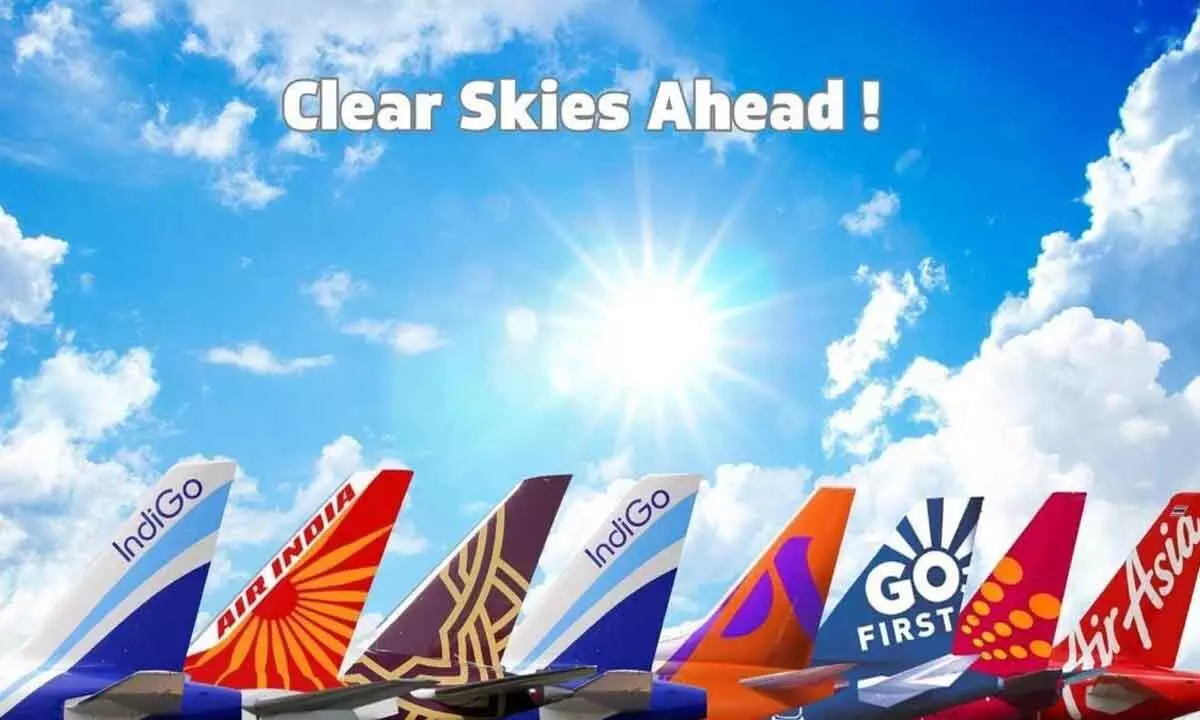A return to net profitability indicates the rising levels of airlines biz
Airlines have controlled non-fuel expenses with prudence despite inflationary pressures
image for illustrative purpose

The high demand for travel in many markets is keeping yields strong with a modest 1.1% decline expected in 2023 compared to 2022 levels (following increases of 9.8% in 2022 and 3.7% in 2021). Efficiency levels are high with an expected average passenger load factor of 80.9% for 2023. That is very near the 2019 record performance of 82.6%. Cargo revenues are expected to be $142.3 billion
“Airline financial performance in 2023 is beating expectations. Stronger profitability is supported by several positive developments. China lifted Covid-19 restrictions earlier than anticipated. Cargo revenues remain above pre-pandemic levels even though volumes have not. And, on the cost side, there is some relief. Jet fuel prices, although still high, have moderated over the first half of the year,” said Willie Walsh, IATA’s Director General.
The return to net profitability, even with a 1.2% net profit margin, is a major achievement. First, it was achieved at a time of significant economic uncertainties. And second, it follows the deepest losses in aviation’s history ($183.3 billion of net losses for 2020-2022 (inclusive) for an average net profit margin of -11.3% over that period). It should be noted that the airline industry entered the Covud-19 crisis at the end of a historic profit streak that saw an average net profit margin of 4.2% for the 2015-2019 period.
“Economic uncertainties have not dampened the desire to travel, even as ticket prices absorbed elevated fuel costs. After deep Covid-19 losses, even a net profit margin of 1.2% is something to celebrate! But with airlines just making $2.25 per passenger on average, repairing damaged balance sheets and providing investors with sustainable returns on their capital will continue to be a challenge for many airlines,” said Walsh.
Industry revenues are expected to reach $803 billion in 2023 (+9.7% on 2022 and -4.1% on 2019). An inventory of 34.4 million flights is expected to be available in 2023 (+24.4% on 2022, -11.5% on 2019).
Passenger revenues are expected to reach $546 billion (+27% on 2022, -10% on 2019). With Covid-19 restrictions now removed in all major markets, the industry is expected to reach 87.8% of 2019 levels of revenue passenger kilometres (RPKs) for the year with strengthening passenger traffic as the year progresses.
The high demand for travel in many markets is keeping yields strong with a modest 1.1% decline expected in 2023 compared to 2022 levels (following increases of 9.8% in 2022 and 3.7% in 2021).
Efficiency levels are high with an expected average passenger load factor of 80.9% for 2023. That is very near the 2019 record performance of 82.6%.
Cargo revenues are expected to be $142.3 billion. While that is down sharply from $210 billion in 2021 and $207 billion in 2022, it is well above the $100 billion earned in 2019. Yields are expected to correct with a 28.6% decline this year, but still remain high by all historical comparisons. Note that yield increases of 54.7% were recorded in 2020, 25.9% in 2021 and 7.4% in 2022.
Expenses are expected to grow to $781 billion (+8.1% on 2022 and -1.8% on 2019). Jet fuel costs are expected to average $98.5/barrel in 2023 for a total fuel bill of $215 billion. That is cheaper than the $111.9 / barrel previously expected (December 2022) and the average cost of $135.6 experienced in 2022.
High crude oil prices were exaggerated for airlines as the crack spread (premium paid to refine crude oil into jet fuel) averaged more than 34% for 2022—significantly above the long-run average. As a result, fuel was responsible for almost 30% of total expenses. In recent months, the crack spread has narrowed, and the full year average crack spread is expected to fall to around 23%, which is more closely aligned with the historical average rate. Fuel costs will account for 28% of the average cost structure, which is still above the 24% of 2019.
Non-Fuel expenses have been controlled well by airlines despite inflationary pressures. With fixed costs being distributed over a larger scale of activity, non-fuel unit costs per available tonne kilometre (ATK) are expected to fall to 39 cents per ATK. That is -6.4% compared to 2022 (41.7 cents /ATK) and marks a return to about pre-COVID levels. Total non-fuel costs are expected to reach $565 billion in 2023.
The economic and geopolitical environment presents several risks to the outlook. With just $22.4 billion of operating profit (2.8%) standing between $803 billion of revenues and $781 billion in expenses, industry profitability is fragile and could be affected (positively or negatively) by a number of factors.
In particular, consideration should be given to: Inflation fighting measures are maturing at different rates in different markets.
Airlines have been directly impacted by aircraft parts supply chain ruptures which aircraft and engine manufacturers have failed to sort out. This is negatively impacting the delivery of new aircraft and the ability of airlines to maintain and deploy existing fleets.

